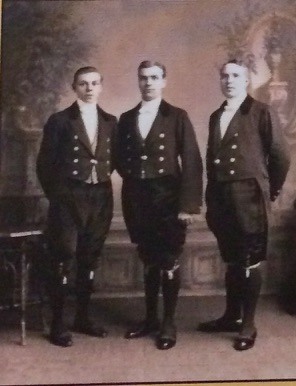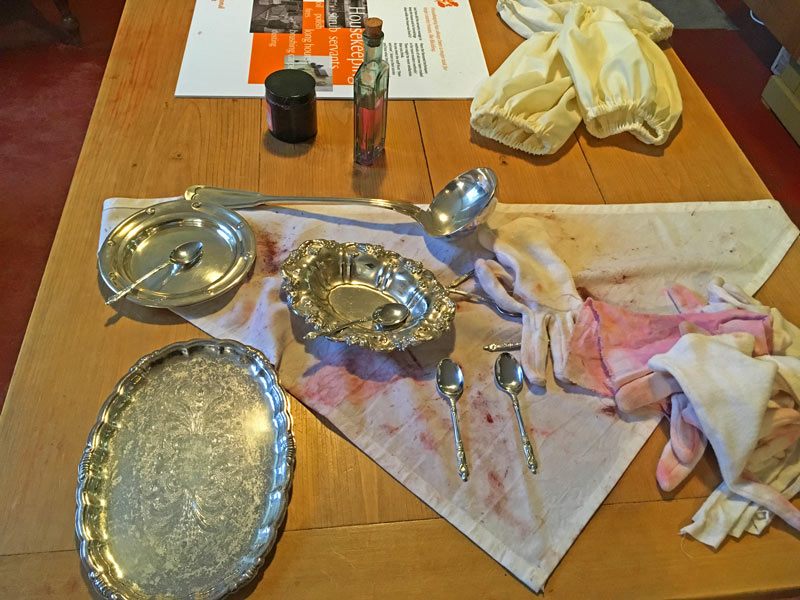I threw a picnic in our garden the other day. We were busy with all…
The Footman
Continuing the series about the English servants, the next one is about the Footman. I immediately think about James Twelvetrees from “You rang, M’lord?” with his bee striped vest, tail coat and shiny hair- Let’s have a look what responsibilities a footman had.
Roles and responsibilities
In the 17th century footmen ran behind or beside the carriages of aristocrats to make sure there was no obstacles in the way and open gates. Later on they traveled on the back of a carriage either standing, or sitting and functioned as escorts, however, they often had to defend the aristocrats if highwaymen attacked the carriage. Therefore, footmen were selected based on their physical attributes. Since the 19th century, footmen became indoor servants and were technically status symbols of the grand house. To have a tall and handsome footman serving dinner was essential to grand houses, something to show off with. In the grandest houses there were several footmen: first, second and third mainly. Footmen were mostly employed based on their height (could not be shorter than 1.80cm), had to be handsome and have a good body. Of course, the taller the footman was, the more salary he could negotiate. Any questions why James Twelvetrees was the footman in the series and was the favourite of the aristocratic ladies?

Uniforms
Footmen had a different uniform: red and yellow striped vests with a brown tail coat, or a blue tailcoat, white shirt and blue tie. One thing was for sure, the attire of a footman was very expensive, sometimes it cost as much as his annual salary. Therefore, the lord of the house sometimes hired the new footman according to the size of the previous one, so that the attire would fit him and the cost of a new attire could be saved. (What a thrifty mentality…!) Footmen had to use hair powder every day on their wet hair, this held their hair firm for the duration of their daily activities. As a result, the footman had to wash their hair every day otherwise the skin would have become red and sore. For this reason many footmen preferred wearing wigs, which they could easily be removed after work.
Names of the footmen
Footmen were called the same name even if their real name was different. In grand houses footmen were often called Frederick or Charles in other houses John or James were popular. (There we go again with James Twelvetrees…) I told you how well the series reflects the life of servants.
Changing requirements
From the 19th century the major task of a footman was serving dinner especially if there was a dinner party in the house. He also delivered messages and had things to clean such as the silverware, valuable china, brushing hats, cleaning shoes and collecting burnt candles and put new ones to candle holders. One of the footman’s perks was that he was allowed to keep the wicks of the burnt candles which he then sold to rug makers. (What a business… We can not even imagine this today, but nothing went to waste those days. In this way I can understand better when Mrs Lipton saved the apple peel and other “nice” things for Mabel.) With the spreading of the automobile, footmen escorted the lord and the lady, just like in old days with the carriage.
At the end of the 19th beginning of the 20th century less male servants were employed because there were more female servants plus female servants were cheaper and trusted better. Since 1777 a tax had to be paid for male servants which grand houses tried to avoid by employing more female servants.
Why do footmen always wear white gloves whilst serving dinner?
Not just because it looks elegant. Footmen used a mix called “Rouge” (red powder and ammonia) to clean silverware which made wounds and blisters on their hands. These were hidden by wearing white gloves.





Comments (0)